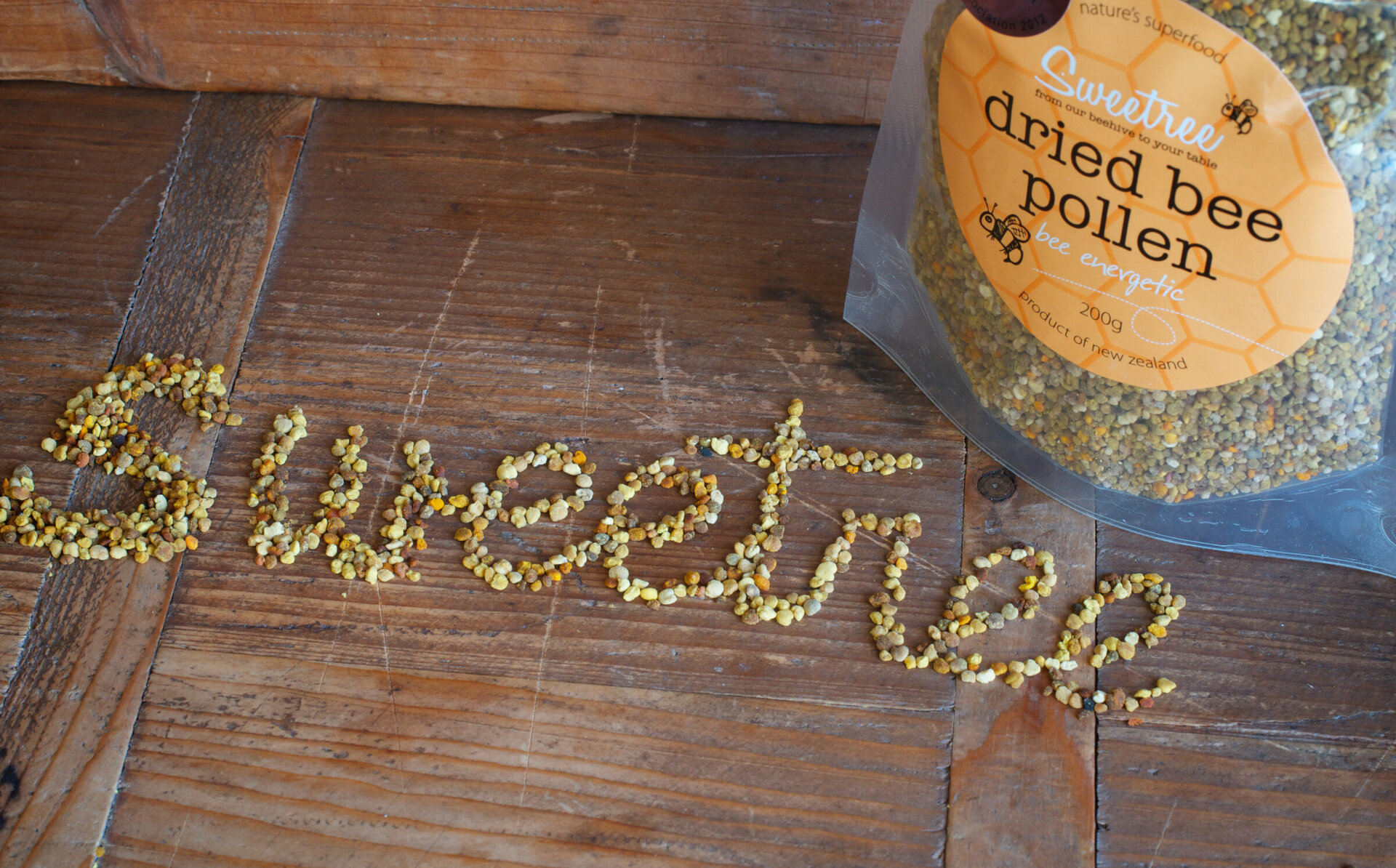Why Sweetree
We pride ourselves on bringing a unique product with tastes across the Waikato to our customers
There are many reasons to choose Sweetree honey, one being that we produce small batches of honey that are unique to the nearby floral sources. Rather than an averaging effect with large scale honey production, Sweetree’s small scale produces variety that reflect the area and season the bees worked their magic.
We enjoy offering customers the ‘taste’ of a location. Customers appreciate the connection to local iconic areas such as Four Brothers Reserve which runs along the beautiful bush clad deviation linking Hamilton and Raglan. On the horizon, wind turbines produce renewable power while our bees gather nectar from predominately Kanuka, with its own special nuance. Check out our other locations.
Taking care of our bees is of the utmost importance
Every effort is made to keep our bees healthy and strong, naturally. We always leave plenty of honey on the hives after honey harvest for winter. We want to leave plenty for the bees over autumn and spring and to build themselves up over spring. This avoids feeding them supplements and sugar syrup. Honey is the best feed for bees and while sugar syrup can stimulate bees in spring, it should not be fed for long periods of time. Overfeeding of sugar syrup can also lead to high levels of C4 sugar in extracted honey which indicates the honey is not natural.
Each hive is checked every 2 weeks to keep an eye out on their food supplies, wasp invasion, disease, etc. If they start to get low on honey we transfer honey from a hive that has surplus to avoid feeding them sugar syrup.
Our bees don’t get transported around the country side, they stay on their apiary site all year round. This is better for the bees and the environment.
We understand the importance of looking after the environment, and integrate this into every part of our business
Our key consideration has always been to reduce and minimize our impact on the environment. Our raw honey is packed into glass jars as opposed to plastic, which not only looks great but allows for reuse or recycling.
Many beekeepers use plastic frames in beehives as they are cheaper and more robust. However most of these frames end up in landfill or may inadvertently be burnt due to being infected with American Foulbrood. We have continued to use the traditional wooden frames with recycled beeswax comb foundation. These materials are also preferred by the bees!
Fuel is a considerable cost and source of carbon emissions for many beekeepers who travel long distances. Over the last few years we have substantially reduced our fuel use by locating our apiary sites closer to our home base. Our longest trip was 3 hours one way and this is now just 35 minutes. We also use an electric car to transport our products to stores and markets.
Our latest investigation has been into our jars and labels to identify if we can use glass jars either made in NZ or from a supplier that uses clean energy for production. Our labels are recyclable as a soft plastic, other labels are made with layers of different materials that can’t be recycled.
Our bees help the environment in many ways, for example, our Hamilton City Honey (Kirikiriroa) contributes to the Hamilton City area. At the Hamilton Farmers Market, many locals tell us they don’t have any bees in their gardens and they would be very keen to have some. In the height of summer we now add 1,500,000 bees into the city, each with a 5km flight range, and we are very pleased to be working with Council to make some contribution to improving biodiversity and nature in the city.
Julie Hardaker, the city’s previous Mayor, said the partnership with Sweetree Honey emphasis Council’s commitment to protecting the city’s natural environment while promoting public-private partnerships. “Hamilton is known for its green spaces and this is a great match. Bees pollinate an estimated 70 per cent of our food crops, so gardeners near these three locations will benefit as well,” Mayor Hardaker says.
Hamilton Zoo’s ex Director Stephen Standley says the hives are a welcome addition to the Zoo’s biodiversity. They are proud to be part of a combined effort with Hamilton Gardens and Taitua Arboretum to produce a quality product for people to buy, and the sweet treat is also given to the zoo’s honey-eating birds such as the tui as well as primates.
We have a social conscience and aim to make a difference in our communities
Between Sweetree and our home we have reduced our waste substantially such that only one paper rubbish sack goes to landfill every 4 weeks. Everything else is recycled or reused. We try to promote a sustainable lifestyle to our customers through our website blog and social media. Check out the ‘Environmental’ section of our blog. We also sell some sustainable products on our website to encourage our customers to reduce waste and look after the environment.
All proceeds from the bee-friendly wildflower seeds go back into research to help the NZ bees; we have raised well over $5000.
Along with a handful of other rural women in the area Stephanie started a project, 'Share the Surplus'. We would often see fruit trees laden with fruit and not picked and it seems such a shame when there are so many people struggling to put food on the table. Our project turns that surplus into preserves. We collect fruit from people who have surplus fruit on their trees, make preserves in recycled Sweetree honey jars that customers have returned, and give it to our local food bank, who really appreciate it. We also give them honey and anything thing else they need when we can.
Our 'Raw Honey' is just like the bees intended it, natural without being damaged by heating or fine filtering
Sweetree honey is extracted by cutting the wax cappings off each wooden honey frame, they are then placed into a spinner, where the centrifugal force extracts the honey from the frames. We then cream our honey, this is to ensure that your honey does not granulate (look sugary) and it maintains a consistent texture. During this process the only thing that is added is a fine-grained natural honey, this is used like a starter to start the creaming process. The honey is then stirred and left to cream over a few days. It’s quite an art to get it just right! We manually pack the honey into re-usable glass jars.
We call our honey 'raw honey' because it is un-pasteurised, during processing it has not been damaged by heating or fine filtering. It still retains the enzymes, antibacterial qualities and high pollen counts naturally occurring in the honey.






